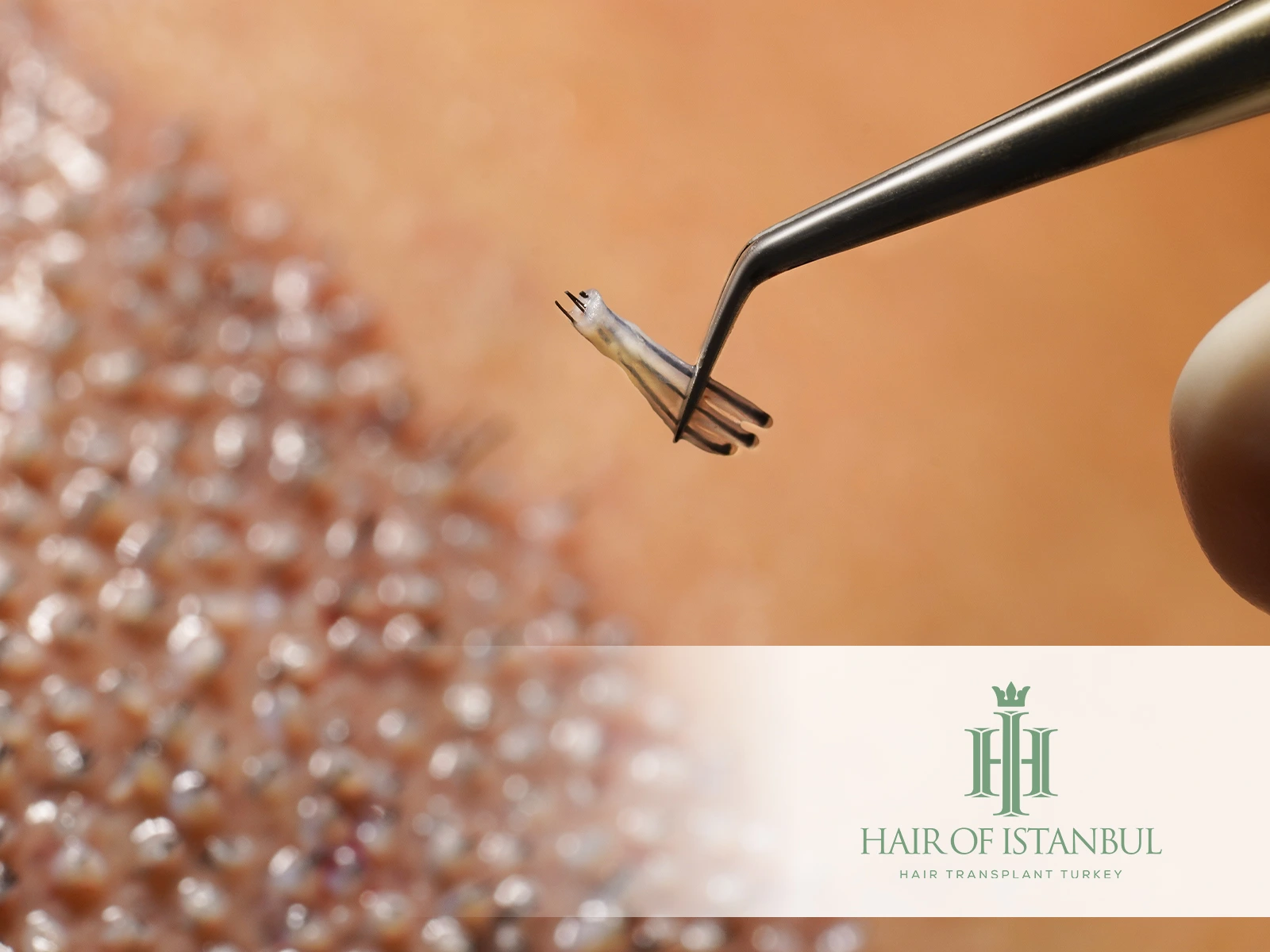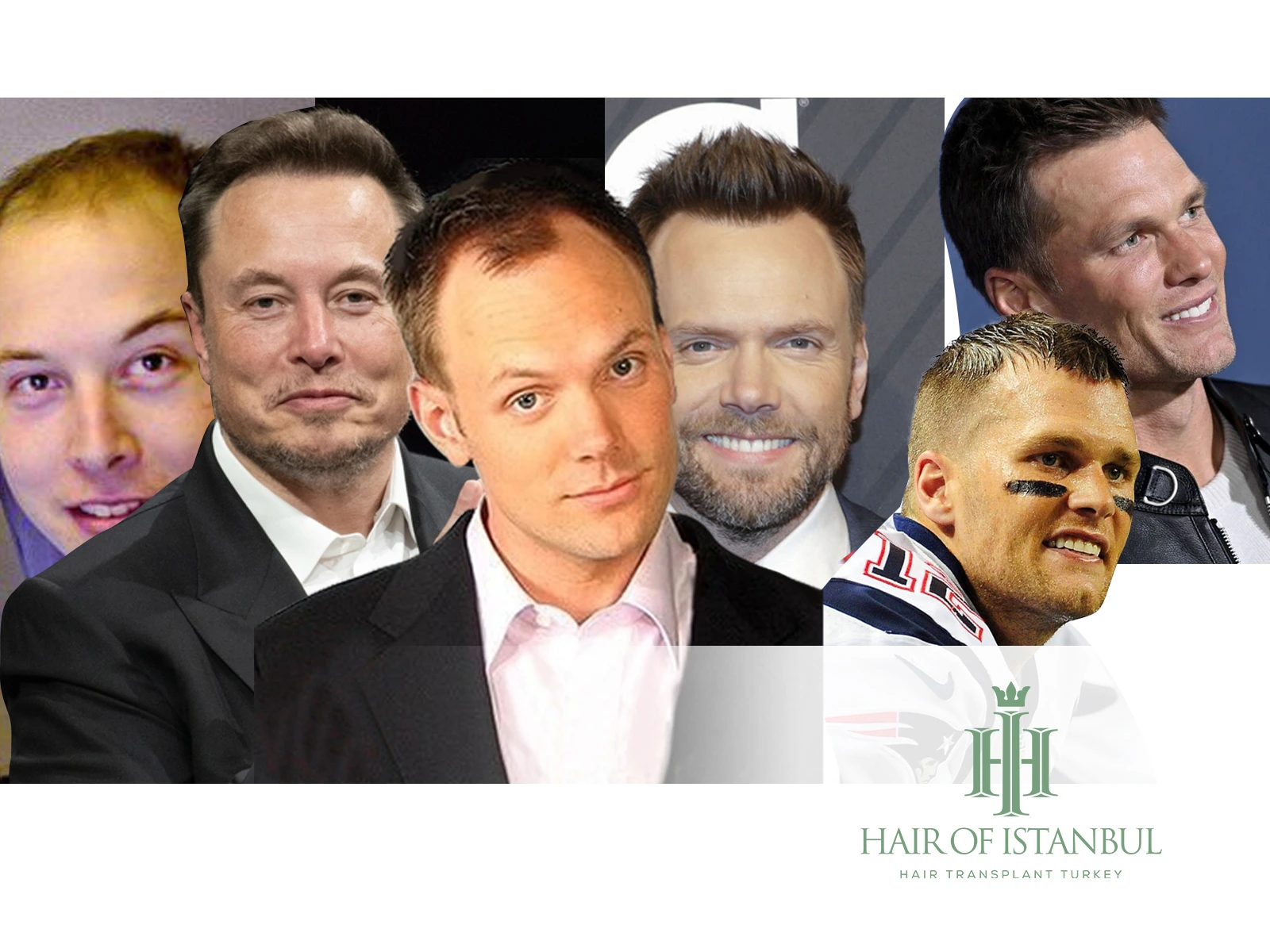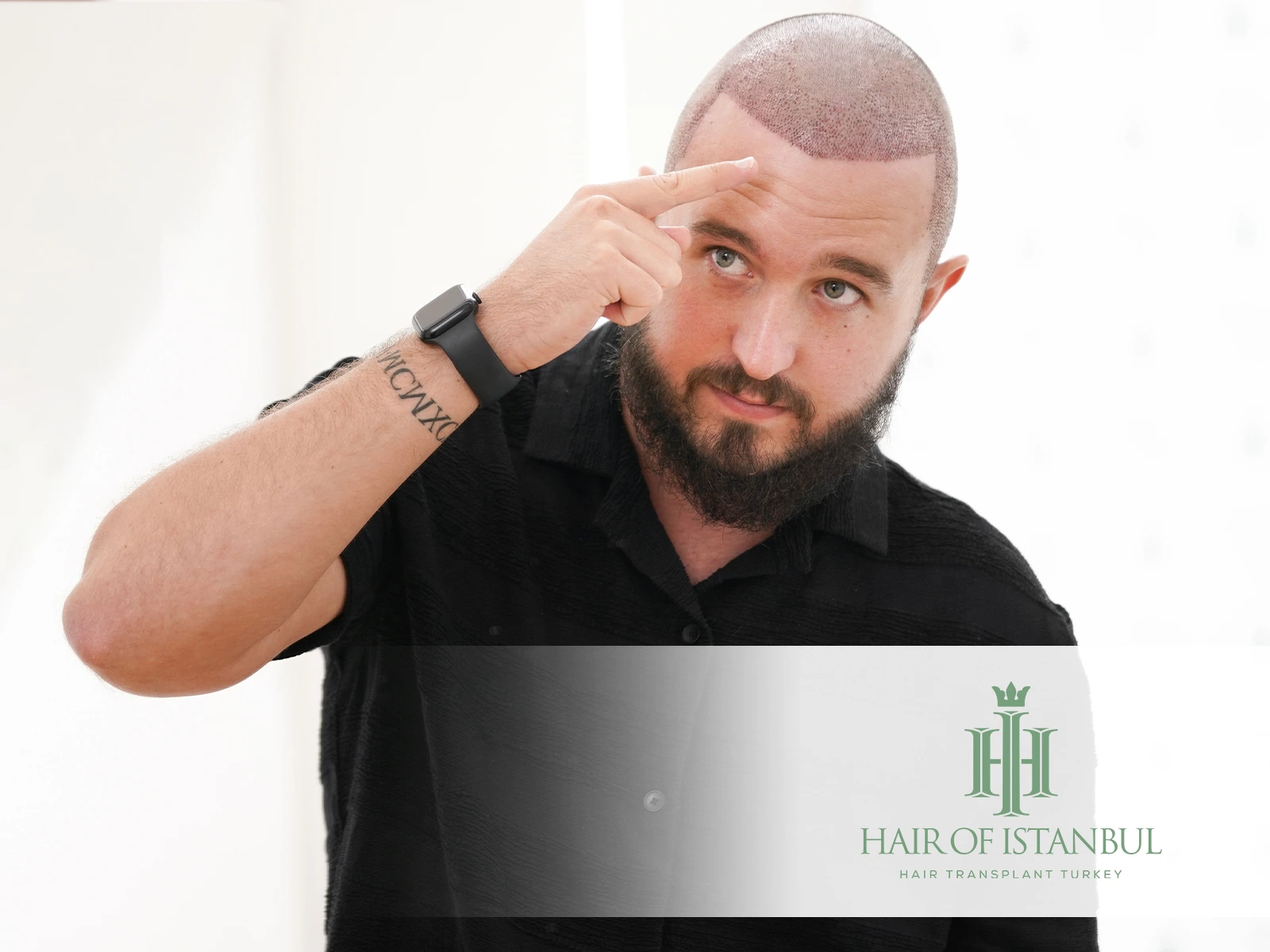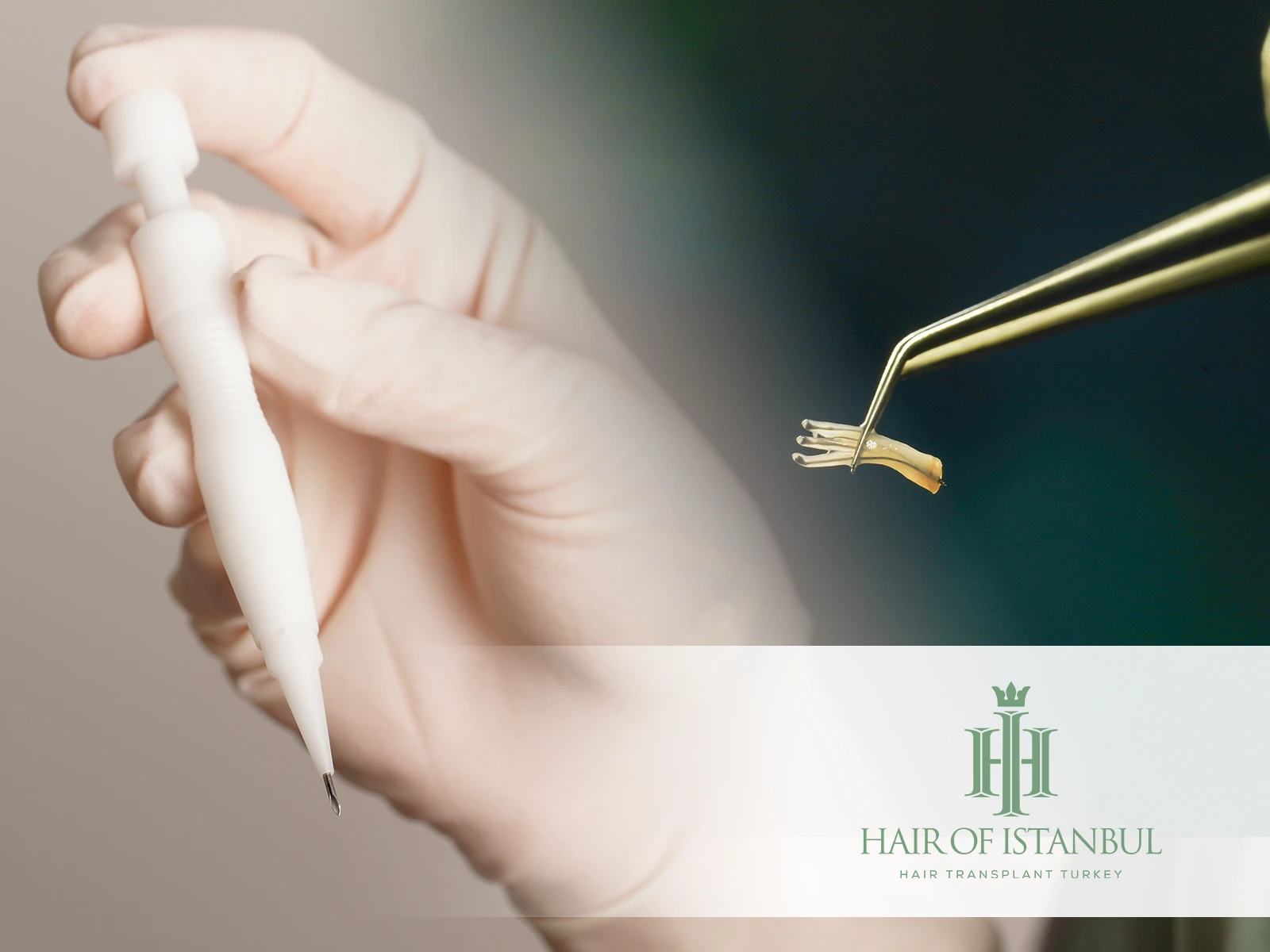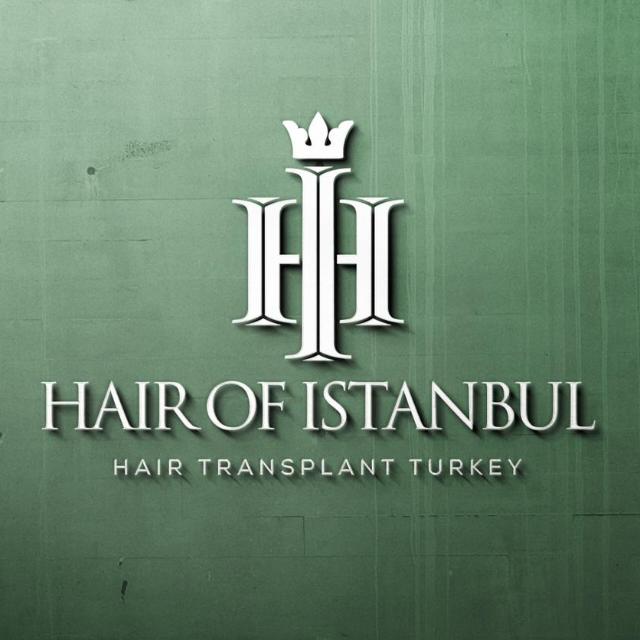Hair Transplant After 3 Months: Photos Show Real Results
Three months after undergoing a hair transplant, patients are typically at a pivotal stage in the hair restoration journey. This period often brings about the first noticeable signs of new hair growth, a crucial indicator of the success of the transplant. To document and share these developments, we have compiled a series of photos that vividly display the real results from this early stage. These images capture the emergence of fine, new hair strands at the transplant sites, providing a visual confirmation of the follicles’ adaptation and growth.
In the following sections of this article, we will delve into a detailed discussion of what these three-month results can mean for the long-term success of a hair transplant. We will explore how these early signs of growth are indicative of the overall health and viability of the transplanted follicles. Additionally, we will provide insights into the care and maintenance practices that are recommended to support and optimize the ongoing development of new hair.
Hair Transplant After 3 Months
Three months post-hair transplant marks a pivotal stage in the hair restoration journey. At this point, many patients begin to see noticeable changes, as new hair starts to emerge from the treated areas. Although these new strands are initially fine and somewhat delicate, they are a positive sign that the transplanted follicles are settling into their new home and beginning to grow.
It is essential for patients to understand that these new hairs are just the beginning. While they may appear thin at first, over time, they will mature, become stronger, and thicken. This transformation is part of the natural progression following a hair transplant, and patient outcomes will continue to improve with each passing month. [1]
During this three-month period, patients often witness the first significant results. However, it’s crucial to maintain patience; the full impact of the transplant will not be fully visible until the hair has gone through a complete growth cycle, which can take up to a year or more. This is a gradual process, and the initial growth can vary in density and thickness among individuals.
For those interested in seeing the specific outcomes across different areas of the scalp, we have shared photos and results for treatments like temple, front and crown, forehead reduction, and full head transplants. These visuals provide a clear insight into the typical progress seen three months after the procedure. To view these transformative results, check out the photos below. Each image is a testament to the effectiveness of the procedure and what potential patients might expect at this stage of their hair transplant journey.
Temple Hair Transplant Results
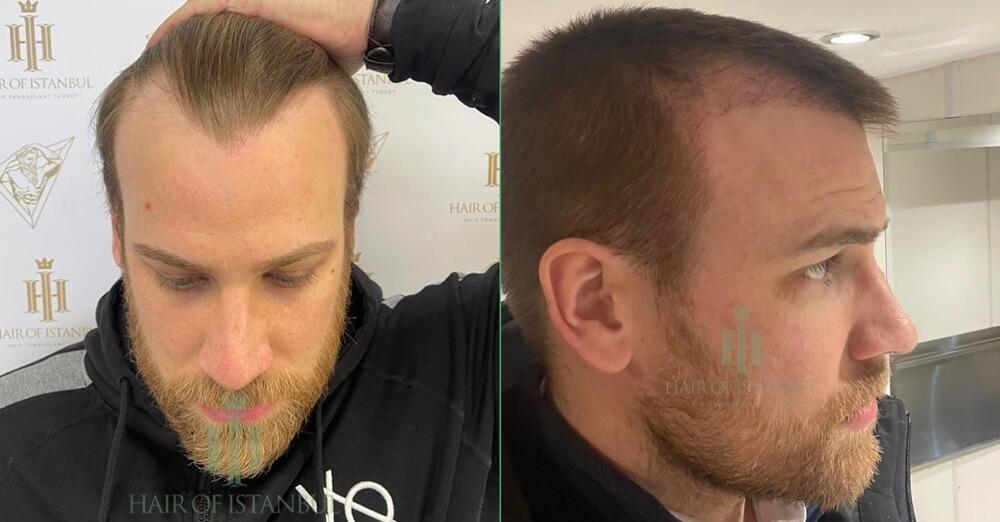
Three months after a temple hair transplant, patients typically begin to notice the emergence of new hair growth in the temple areas. This early stage is crucial as it sets the foundation for the future hairline. The provided photos showcase how the temples start to fill in, giving a more defined and youthful hairline.
Also Read: Alcohol After Hair Transplant: Understanding the Impacts!
Front and Crown Hair Transplant Results
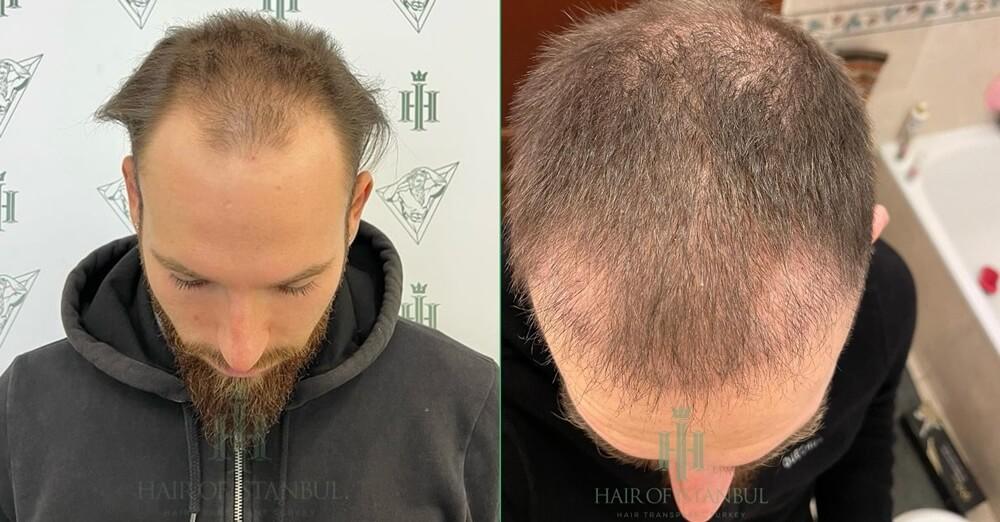
At the three-month mark, the front and crown areas start showing significant signs of new hair growth. This section is particularly important as it frames the face and enhances the overall hair density. The images below highlight the initial thickening of hair in these areas, demonstrating the beginning stages of coverage and volume enhancement.
Forehead Reduction Hair Transplant Results
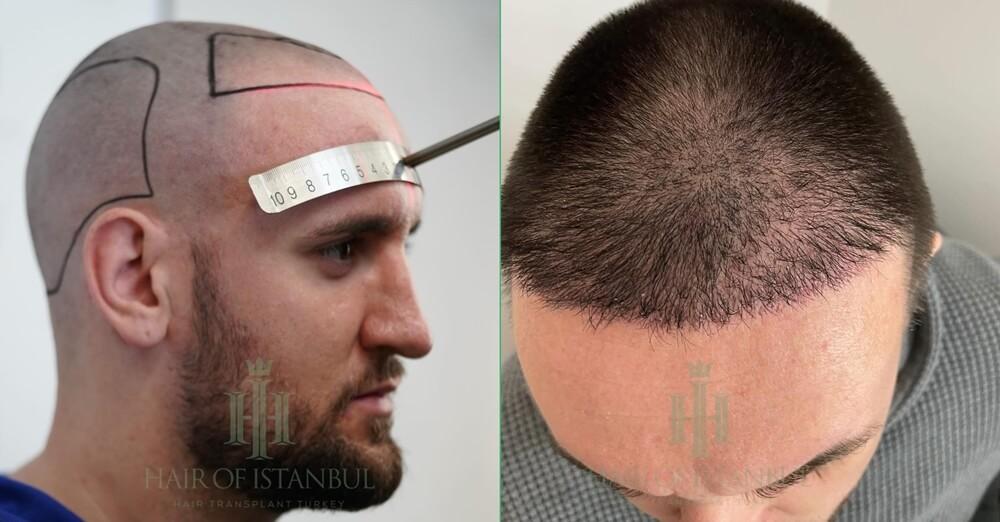
Following a forehead reduction hair transplant, the initial results can be observed as early as three months post-procedure. This treatment reduces the forehead size while improving the hairline’s position. The photos illustrate the initial new hair growth along the hairline, which helps in achieving a more proportionate facial aesthetic.
Full Head Hair Transplant Results
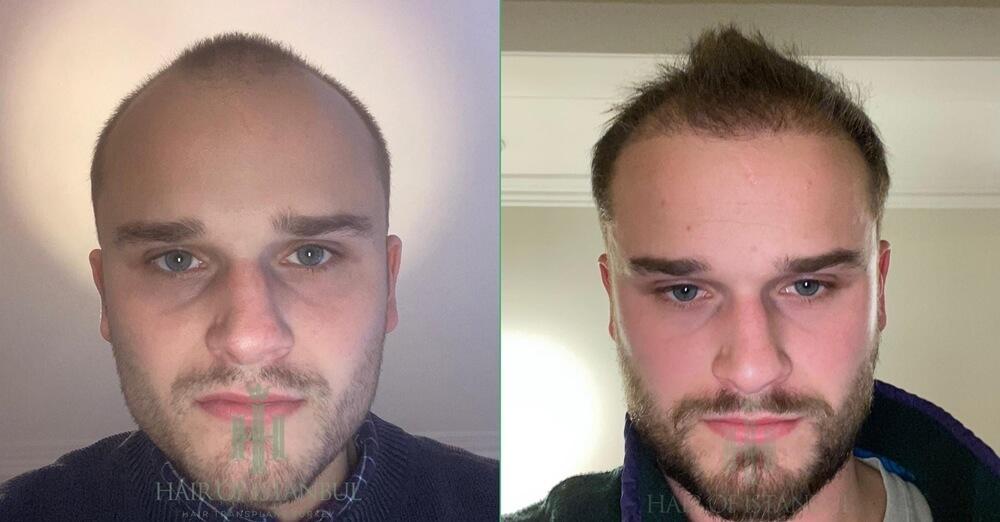
For patients undergoing a full head hair transplant, the three-month update is a time of noticeable transformation. Across the scalp, sparse areas begin to develop visibility of new, fine hair. The accompanying photos display these early stages of hair development, providing a glimpse into the comprehensive enhancement of hair density.
Also Read: When Can I Exercise After Hair Transplant? Learn the Right Time!
What to Expect 3 Months After Hair Transplant?
Three months into the recovery from a hair transplant, patients typically begin to notice the first signs of new hair growth. During this period, it’s essential to manage expectations. The new hairs are in the early stages of development, and while they provide a glimpse of the future fullness, they are not yet representative of the final outcome. Significant improvements will continue to emerge over the next several months as the hair matures and thickens.
For a detailed understanding of what to expect, refer to the table below, which outlines various aspects of the post-transplant recovery and growth process.
| Activation of Hair Growth: | Around three months post-transplant, the hair follicles begin actively producing new hairs, though the initial growth may appear slow and fine. |
| Shedding and Regrowth: | A shedding phase occurs 2-4 weeks after the transplant. This is normal and temporary, with new hair growth becoming more noticeable in the following months. |
| Scalp Healing: | By three months, the scalp should largely be healed, with any redness or scabbing from the surgery diminished, though complete healing may vary by individual. |
| Continued Hair Maturation: | The new hairs will continue to mature and thicken; expect these to start resembling natural hair in texture and strength. |
| Nerve Renewal: | The renewal of nerves in the recipient area, providing sensory feedback, is a process that can take several months to complete. |
| Integration of Blood Supply: | The first three months are crucial for establishing a blood supply to the transplanted grafts, essential for follicle survival and growth. |
| Importance of Patience: | Hair transplant results take time to manifest fully, with significant developments visible between 6-12 months post-procedure. |
| Enhanced Density: | The transplanted area might show improved density, though the new hairs may still be relatively fine compared to mature hair. |
| Maintaining a Healthy Lifestyle: | A balanced diet, regular exercise, and effective stress management support optimal hair growth and overall well-being. |
| Follow-Up with Your Surgeon: | Follow your surgeon’s post-operative instructions and attend follow-up appointments to assess progress and receive care guidance for the transplanted hair. |
* This table aims to provide a comprehensive overview of the various stages and expectations associated with hair transplant recovery three months after the procedure.
Also Read: How Hair Loss Affects Self Esteem: Strategies to Cope!
How to Improve Hair Growth 3 Months After Hair Transplant Surgery?
Three months after hair transplant surgery, it’s crucial to take proper care of your scalp and newly transplanted hair to ensure the best possible results for hair growth. This period is significant as the transplanted hair begins to take root and slowly grow. To support this growth and avoid any issues that could inhibit your progress, certain care measures should be taken. Here is a guide on how to foster an optimal environment for your new hair to flourish.
For detailed care instructions, refer to the table below, which outlines key actions and their importance in promoting healthy hair growth post-transplant.
| Protect Your Hair from Excessive Sunlight: | Excessive UV exposure can damage the scalp and hair follicles. Wear a hat or use an umbrella when outdoors to shield your hair from harmful rays. |
| Avoid Pulling Your Hair: | Tugging or tightly styling your hair can stress transplanted follicles and impede growth. Opt for loose hairstyles to minimize tension. |
| Avoid Styling Products: | Chemicals in styling products can irritate the scalp and interfere with hair growth. Keep your hair care routine simple and gentle. |
| Keep Your Hair Clean: | Regular washing helps prevent infections and keeps the pores clear, but be gentle to avoid disturbing the new grafts. |
| Do Not Rub Your Hair Excessively: | Vigorous rubbing while drying your hair can dislodge new grafts. Pat your hair dry gently instead. |
| Ensure Adequate Water Intake: | Staying hydrated is essential for maintaining the health of your hair follicles, as it promotes better circulation and nutrient distribution. |
| Eliminate Stress from Your Life: | Stress can significantly affect hair growth. Engage in stress-reducing activities like yoga, meditation, or regular exercise. |
| Avoid Smoking and Alcohol Consumption: | Both smoking and excessive alcohol use can impede blood flow and nutrient delivery to the scalp, hindering hair growth. |
Also Read: When Can I Exercise After Hair Transplant? Learn the Right Time!
CONCLUSION
As we reflect on the progress visible three months after a hair transplant, it’s clear that this early stage is crucial for setting the tone of the recovery and growth to come. At Hair of Istanbul, we pride ourselves on delivering expert care that supports this critical phase. Our team, comprising experienced specialists, works meticulously to ensure that each patient’s journey toward hair restoration is as smooth and effective as possible.
Our approach combines the latest technology with proven techniques to optimize the health and aesthetics of your new hair. We understand that the journey doesn’t end after the procedure; it’s about ongoing care and precise follow-up to secure the best results. This dedication to excellence is what sets Hair of Istanbul apart as a leader in the field of hair transplantation.
Choosing the right clinic is paramount, and at Hair of Istanbul, we commit to providing not just treatments, but a pathway to renewed confidence through superior hair restoration solutions. For anyone considering a hair transplant, remember that the journey to fuller hair begins with choosing a clinic that supports your goals with expertise and care. We invite you to visit us and see firsthand how we can help you achieve the natural, thriving hair you desire.
References:
- [1] Quora, Nov 30, 2020 – I just had a hair transplant, it’s been 3 months, what percentage of the hairs should have started to grow back by now – https://www.quora.com/I-just-had-a-hair-transplant-it-s-been-3-months-what-percentage-of-the-hairs-should-have-started-to-grow-back-by-now
- [2] Amit S. Kerure and Narendra Patwardhan, Oct-Dec 2018 – Complications in Hair Transplantation – https://www.ncbi.nlm.nih.gov/pmc/articles/PMC6371733/

